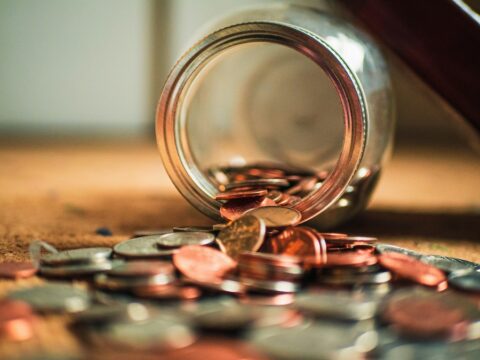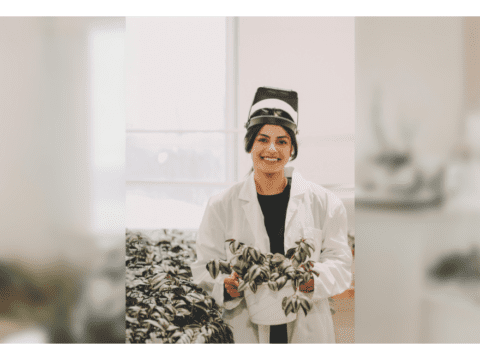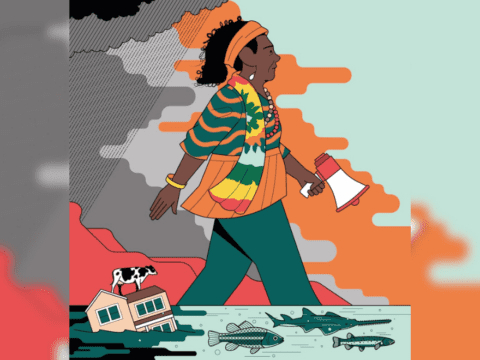As we descend through the shaded monsoon rainforest, crossing dry stream channels on the final approach to Butterfly Gorge, brittle pandanus palm and eucalyptus leaves crackle with each step. It is October 2018. The wet season has not yet begun. Still early in the day, it’s approaching 40 C. A sulphur-crested cockatoo screeches our arrival at the gorge, and to escape the heat, we slip into its emerald green waters. This hike in northern Australia’s Nitmiluk National Park is a sentimental return, an anniversary trip to the place where the first sparks of romance were kindled between my partner and me many years earlier.
In the decades since our first visit, the park has retired its colonial name of Katherine Gorge. The government now leases the land from the Jawoyn, this land’s traditional owners who are now park co-managers. Nitmiluk is the Jawoyn name for “the cicada place.” Fitting for a couple of young backpackers to have emerged and found each other in a place named for the song of a creature that appears from underground with unpredictable and serendipitous timing.
The heat gets even more intense as we hike back. We emerge from the shade onto exposed escarpment, where a p[ark ranger has warned us the temperature could jump much further. Moving slowly, frequently sipping water, we finally complete the six-kilometre trek back to the park’s air-conditioned visitor centre. It takes us several hours of rest in the cool to feel slightly less cooked.
The top end of Australia has long had an unforgiving climate, pushing humans to their physiological limits. But over the decades since we first visited, the hostile heat here has grown increasingly worse. Heat waves are longer and more frequent. The rains are even stronger.
I’m remembering that 2018 trip for a particular reason right now. The same month we were there, climate scientists gave humanity our starkest warning yet about what greenhouse gas emissions in the atmosphere and ocean are doing to the planet. The document, Global Warming of 1.5°C, published by the Intergovernmental Panel on Climate Change, talks about what we need to do to keep global heating to no more than 1.5 C above pre-industrial norms.
Crucially, they also gave us a deadline: a dozen years to accomplish deep cuts in greenhouse gas emissions, the urgent first step toward ending emissions once and for all by mid-century. If we fail, the report says we will see “irreversible loss of the most fragile ecosystems, and crisis after crisis for the most vulnerable people and societies.”
We’re halfway to that deadline. We’re way off track. Greenhouse gas emissions keep rising. Last April, the planet breached the barrier of 425 parts per million of carbon dioxide in the atmosphere. The last time they were consistently higher was 16 million years ago.
“We are not seeing global emissions fall. And the longer we wait, the steeper the path — not just to 1.5 but to any reasonable target,” says Kate Marvel, former senior climate scientist at the U.S. climate solutions non-profit Project Drawdown.
With just six years remaining, have we left it too late?
More on Broadview:
In our lifetimes, we have seen climate change transform from abstract to visceral. It’s become hard to ignore the heat, hurricanes, droughts, fires and floods. Canada is far from immune. The disruption, so noticeable even years ago in the Arctic, where the temperature is warming a remarkable four times faster than the global annual average, is now palpable across the nation.
The summer of 2021 saw Canada’s deadliest heat event, claiming 619 lives as western Canada experienced temperatures 20 C higher than normal. That November brought the most expensive weather-related disaster in British Columbia’s history as an atmospheric river flooded out several bridges, including seven along a 130-kilometre stretch of the Coquihalla Highway. Metro Vancouver was temporarily severed from the rest of the country. In the flooded Fraser Valley to the east, people in Abbotsford were stranded, and on the adjacent farmland of Sumas Prairie, more than 600,000 farm animals were reported to have perished.
“It was a bonkers time,” says Bryan Crosby, director of infrastructure resiliency with British Columbia’s ministry of transportation and infrastructure, who helped co-ordinate the emergency response. New bridges, now complete two years after the flood, are longer and higher, with stronger deep-pile footings — their designs adjusted for climate projections to reduce the risks. Respecting rivers, anticipating extremes and planning for resiliency is the road to the future, not just for the Coquihalla but for the planet.
The truth is that even as this 1.5 deadline creeps up, Earth is getting closer to crossing lines that, once passed, are difficult to recover from. We are not entering a “new normal.” We are entering an increasingly unstable state — an era of unknowns. Earth is unlikely to be able to support life as we know it unless we change course. Last May, a team of scientists revealed that we have crossed seven of the eight global boundaries in systems that are necessary to keep the planet safe for humanity. Among the concerns: the functional integrity of ecosystems, freshwater flows and groundwater levels.
Tens of millions of people are already being harmed. This means that the fundamental principle of global climate justice, which, as the United Nations says, is “that no one will be left behind,” has already been violated.
“When people say that we’re all in the same boat, they’re joking,” Dhesigen Naidoo, who leads adaptation measures for the South African Presidential Climate Commission, said at the 2022 World Science Forum in Cape Town. He explained that when it comes to adapting to a changing climate, “some of us are in super-yachts, and the rest of us are hanging onto the debris for dear life.”
Not only are the impacts unequally distributed — one degree of heating on average across the globe means two in southern Africa, he said — but the ability to cope is, too. “We have this paradox,” Naidoo said. “The high emitters have low vulnerability, and very low emitters like Africa and South Asia have enormously high vulnerability to climate change.”
Want to read more from Broadview? Consider subscribing to one of our newsletters.
Still, the effects of climate heating have become unavoidable, no matter where you live. Floods in 2022 in KwaZulu-Natal, South Africa, killed more than 400 people. Droughts, wildfires and floods are hitting Europe, the United States and Australia. Devastating typhoons are slamming southeast Asia and the South China Sea. Our ability to cope is inequitable, but “as a globe,” Naidoo said, “we are now in the same soup.”
Even as the climate shifts from hospitable to hostile, there are promising signs that we can pull back from the brink. Road maps to the future are popping up everywhere, devised by some of the sharpest minds on the planet.
Take the desert city of Tucson, Ariz., as just one local example. It’s the home of Diana Liverman, regents professor at the University of Arizona. She was an author of the 1.5 report and of the boundaries study. After decades of global work, she has started advising Tucson’s mayor on the city’s climate plan. Planting trees is one major initiative.
“Shade really helps cool the city,” Liverman says. It is also tied to equity. Wealthy communities have more trees, so planting trees in poorer communities is important. Other adaptations include harvesting water and solar energy and reducing energy costs to help pay for air conditioning, key to surviving a heated planet.
Quebec has become the first jurisdiction in Canada to ban new oil and gas production, notes Laura Cameron, energy policy adviser for the International Institute for Sustainable Development, which is based in Winnipeg. She co-authored the 2023 report Setting the Pace, which made an economic case for managing the decline of oil and gas production in Canada. “We need to be moving away from fossil fuels,” Cameron says.
In Canada, our total emissions of greenhouse gases fell 8.4 percent between 2005 and 2021, Statistics Canada reports. Globally, the momentum is shifting toward making more electricity from carbon-free renewables, such as hydro and solar, and then using this electricity for transportation, industry and household heating, explains Pep Canadell, executive director of the Global Carbon Project and chief research scientist at Australia’s national science agency, CSIRO. “The simplest thing we can do is to electrify as much as we can of our society and economy,” he says.
Already, more than half of all energy workers are employed in alternative energy, according to a report last year from the International Energy Agency. Since 2020, investment in clean energy has risen 40 percent. The agency also projects that overall growth in energy employment will continue despite declines in fossil fuel jobs. Canadian research shows the same is true here. As for car sales, in 2020, one in 25 cars sold was electric. In 2023, it was one in five. And while not all clean technologies are thriving, solar is taking off.
In fact, solar energy is now the cheapest form of electricity humanity has ever seen, says Sugandha Srivastav, an environmental economist at the University of Oxford. “Power is one of the most polluting sectors, so we can already solve that challenge,” she says. “That gives a lot of hope.” And she points to a recent precedent for massively transforming an energy system: abolishing enslavement. “The abolition of slavery was actually a type of energy transition because we used slave labour for a lot of economic activities,” Srivastav says. One estimate put the size of the enslavement economy in the United States as high as US$19 trillion in today’s dollars. The global oil and gas economy, by contrast, was about US$4 trillion last year. “The energy transition that we’re looking at today has similar dimensions in terms of size, moral implications, scale,” she says. “We have done it before.” The shift happened despite the powerful, well-financed forces who wanted to retain the status quo, she adds.

High on the to-do list is rethinking the way we grow food. Our current food system uses a lot of fossil fuels for chemical pesticides, fertilizers, transportation, and cooling and freezing foods, says Tammara Soma, research director and co-founder of the Food Systems Lab at Simon Fraser University in British Columbia. “Then we cook the food, only for it to be wasted.” She argues that we need to develop solutions that use less fossil fuel, including sustainable farming practices that work in balance with nature, short food supply chains and strong local food systems.
Still another key solution, Canadell notes, is keeping trees in the ground. As living systems that suck carbon from the air, trees are essential.
Above all, though, tackling the problem from many directions at the same time is critical. Every decimal of a degree matters. So 1.6 C is better than 1.7 or 1.8 C, and “we are in charge,” Canadell says.
Back in northern Australia, a day after that 2018 hike, we drive southwest toward the seaside town of Broome. For hours there are no gas stations, no restaurants, no signs of human habitation save the occasional signpost marking a cattle station down red dirt sideroads that stretch as far as the eye can see. When we stop for lunch, the only life we spot is a family of great bowerbirds happy to scavenge moisture from a banana peel on our mercifully shaded picnic table. The terrain is bone dry. It seems as though no rain has fallen yet this year — or possibly for several. Humans may not live here in great numbers, but their activities are clearly affecting the local climate. Regions of Australia are experiencing multi-year droughts. When the rains do come, they fall onto the sun-baked soil in gluts often too vast to be absorbed.
We had planned to camp along our journey. The heat makes it impossible. With intense sun baking the earth all day, midday temperatures consistently hit the 40s. After sunset, the heat radiates back. Lying in a tent on the ground, even in the middle of the night, feels like sleeping on a frying pan. Just after 3 p.m., we take a short detour off the highway to Nackeroo Lookout. The air that hits us when we open the car door feels like the whoosh when you open an oven. The dashboard thermometer registers 45 C.
How much hotter can it get? Do we really want to find out? “There is no bottom to how far we can fall into the slippery slope of climate change…and therefore we have to deploy all our efforts,” Canadell stresses.
I think about my chat with Kate Marvel, the scientist who was at Project Drawdown. Ten years ago, we likely didn’t have all the solutions we needed to address climate disruption. Now we do. “So I think it’s important to hold two truths at the same time,” she says. “The problems are getting worse, but the solutions are getting better.”
Marvel, well, marvels that this is a very special moment to be alive. I have to agree. Human history is full of examples of the incredible way we can pull together in a crisis. We cannot afford to give up hope. For the sake of humanity now and in the future, it’s time to reveal our better selves.
***
Lesley Evans Ogden is a journalist in Vancouver.
This article first appeared in Broadview’s April/May 2024 issue with the title “Our Last Best Chance.”















